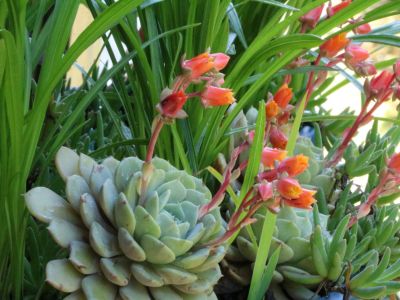Growing succulents in the shade isn’t ideal for most varieties, but a prized few will actually flourish in low light situations. The trick is to choose the right succulents for shade and care for them appropriately.
About Outdoor Shade Succulents
It is not common to see succulents like burro’s tail or string of pearls hanging in planters under a covered patio or porch. These varieties will still prosper even though they usually only get filtered light. Such shade tolerant succulents are few and far between, but they do exist. They are mostly smaller specimens, but a few larger species can be found. Building a succulent shade garden requires a bridge between two worlds. Most of our common succulents need a full day of sun or they get leggy and fail to bloom. Plants in shade should ideally at least get some dappled light six hours per day. The good part about a low light site is that plants sensitive to searing sunlight can get a break during the hottest time of the day. This will help prevent scald and preserve the color of the plant. Outdoor shade succulents will also need less water, making them perfect xeriscape plants.
Varieties of Succulents for Shade
Most shade tolerant succulents are suitable for containers, but a few will succeed in properly prepared soil. Make sure the garden site is well draining and incorporate a bit of grit to enhance percolation. Succulents in moist soil may rot and perform poorly, especially in shade. Here are some to try:
Aloe VeraJade PlantEuphorbiaHoyaHoliday Cacti (Easter, Christmas)Elephant FootFoxtail AgaveWoodland StonecropGasteriaEcheveria Painted LadyRosary VineNight Blooming CereusSaucer Plant (Aeonium)Panda PlantString of HeartsZebra PlantString of BananasFlaming Katy
Growing Succulents in Shade
If at all possible, prune out a few branches of any tree that is creating the shade to let some dappled light through. Amend the soil so it drains well and mulch with rock or inorganic material. Organic mulches will hold water and can cause rot. Water about half as much as you would a plant in full sun. Use your fingers to test soil several inches (8 cm.) deep. If you feel dry soil, it is time to water. Also, monitor the condition of leaves. Any puckering indicates it is time to irrigate. Water only at the root zone and avoid getting moisture on leaves which may not dry quickly and promote fungal spores. Watch for common insects like mealybugs and combat with a horticultural soap or oil.
